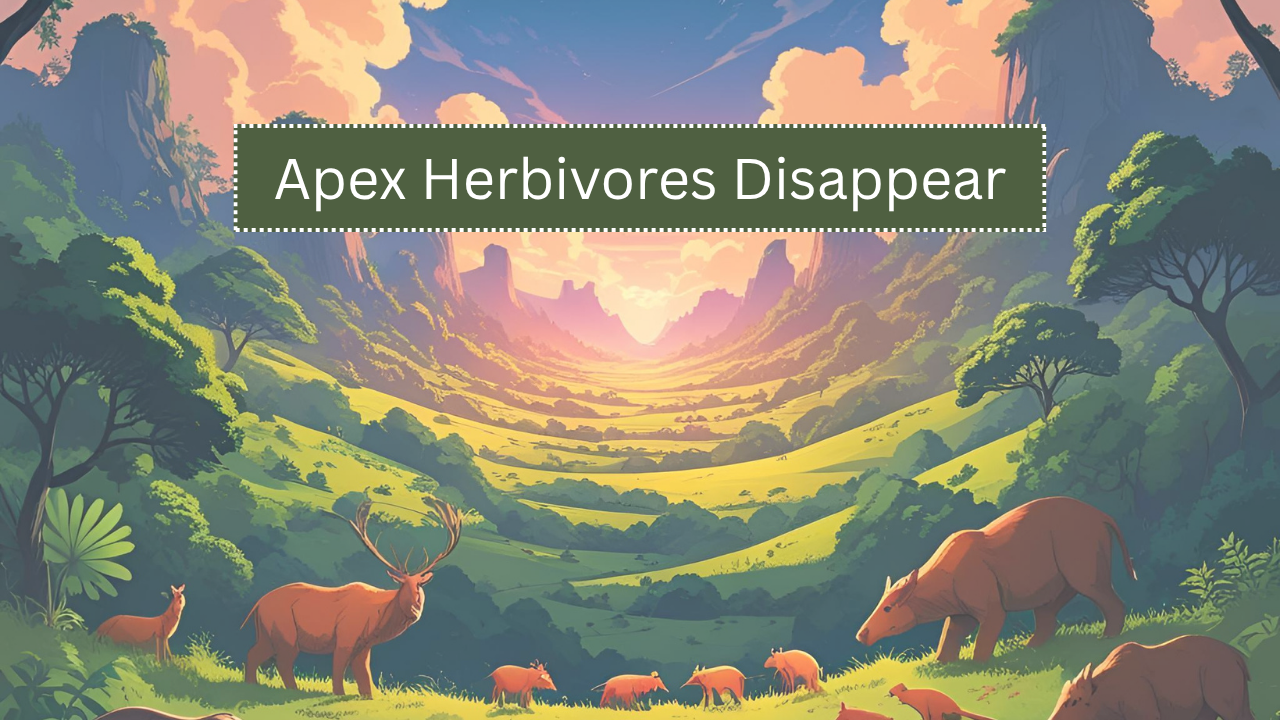Forest ecosystems depend on a complex web of interactions among plants, animals, and microorganisms. Apex herbivores—those large plant-eating animals at the top of the herbivory food chain—play a crucial role in shaping the dynamics of these ecosystems. Their disappearance can trigger cascading effects that disturb not only the structure of vegetation but also the behavior of other species and the ecological processes they influence.
Effects of Apex Herbivore Loss on Forest Structure
Apex herbivores act as natural architects of forest landscapes. Their grazing, browsing, and movement patterns help regulate plant growth and diversity.
- Tree density changes: Without large herbivores like elephants or moose, forest areas often become denser with young trees and shrubs.
- Understory overgrowth: Excessive growth of smaller vegetation in the absence of grazers can hinder the germination of new tree species.
- Shift in species composition: Fast-growing or shade-tolerant species may dominate over those that rely on open canopies or disturbed soil for reproduction.
- Reduced forest heterogeneity: Lack of grazing leads to uniform plant growth, lowering habitat variety.
Forest Structural Changes Due to Apex Herbivore Extinction
| Forest Feature | With Apex Herbivores | Without Apex Herbivores |
|---|---|---|
| Tree Canopy | Varied gaps and heights | Dense and continuous |
| Understory Vegetation | Moderately controlled | Overgrown and thick |
| Plant Diversity | Maintained by selective feeding | Dominated by competitive species |
| Regeneration Patterns | Stimulated by grazing and movement | Blocked by dense thickets |
| Fire Risk | Lower due to sparse grass and shrubs | Higher due to biomass accumulation |
Impact on Nutrient Cycling and Soil Quality
Soil processes and nutrient availability shift significantly when apex herbivores are removed.
- Reduced dung and urine input: Decreases the natural fertilization of the soil, affecting microbial activity and plant nutrient uptake.
- Less soil aeration: Absence of heavy herbivores prevents regular disturbance of compacted soil, affecting water infiltration.
- Decline in decomposition rates: Fallen leaves and dead wood accumulate in the absence of trampling and digestion-based breakdown.
- Imbalanced nitrogen and carbon cycles: Fewer returns of organic material lead to nutrient-deficient soils over time.
Changes in Animal Communities
The loss of apex herbivores also reshapes animal populations and their behaviors.
- Predator-prey relationships are disrupted: Carnivores may suffer due to the decline of herbivore-dependent food sources.
- Small herbivore overpopulation: Species like deer or rodents may flourish unchecked, causing overgrazing.
- Loss of symbiotic species: Birds and insects that rely on apex herbivores for food or nesting suffer from habitat loss.
- Increased human-wildlife conflict: With smaller herbivores venturing into agricultural fields, crop damage and economic losses can increase.
Shifts in Animal Populations Post-Apex Herbivore Disappearance
| Animal Group | Direct Impact | Long-Term Consequences |
|---|---|---|
| Large Carnivores | Loss of prey and territory | Decline in population |
| Small Herbivores | Less competition, more food | Overpopulation and forest degradation |
| Insect Pollinators | Habitat alteration | Decline in population |
| Seed Dispersers (e.g., birds, monkeys) | Limited access to open forest | Reduced forest regeneration |
Spread of Invasive Species
Apex herbivores act as barriers against the spread of non-native plants and animals. Their absence gives these species a chance to take over.
- Less competition for invasive plants: No grazers to suppress fast-growing species allow invasives to dominate.
- Disruption of native plant reproduction: Invasive plants can smother or outcompete native flora, reducing biodiversity.
- Altered fire regimes: Invasive grasses can dry quickly and fuel more frequent forest fires.
Ecological Cascades Triggered by Loss
The absence of apex herbivores can spark a trophic cascade, affecting every level of the ecosystem.
- Primary producers (plants) grow uncontrollably, altering light and water availability for others.
- Secondary consumers (insects, small mammals) shift habitats in response to structural changes.
- Tertiary consumers (predators) experience loss of prey, leading to migration or extinction.
Cascade Effects in Forest Ecosystems
| Trophic Level | Effect of Apex Herbivore Absence |
|---|---|
| Primary Producers | Overgrowth and reduced species diversity |
| Primary Consumers | Population boom and food resource depletion |
| Secondary Consumers | Increased competition, forced migration |
| Tertiary Consumers | Starvation and territory shrinkage |
Human Implications of Herbivore Extinction
The removal of apex herbivores has broader implications beyond forest health.
- Loss of ecosystem services: Forests provide clean air, water regulation, and climate buffering. Imbalanced ecosystems degrade these services.
- Decline in ecotourism: Large herbivores are major attractions in wildlife tourism. Their disappearance can harm local economies.
- Agricultural damage: Overabundant smaller herbivores may invade farmlands, causing crop loss and pest issues.
- Cultural and spiritual loss: In many communities, apex herbivores hold symbolic or religious importance.
Conservation Strategies to Prevent Collapse
Active measures are needed to prevent the ecological collapse triggered by apex herbivore loss.
- Reintroduction of species: Programs aimed at restoring native herbivores help restore balance.
- Fencing and corridor creation: Allows safe movement and prevents fragmentation of animal habitats.
- Community-based conservation: Involving locals helps protect both livelihoods and ecosystems.
- Invasive species control: Manual removal or biological control can curb the dominance of non-native plants.
Conservation Methods for Apex Herbivore Protection
| Conservation Method | Purpose |
|---|---|
| Species Reintroduction | Restores ecological balance |
| Habitat Restoration | Supports plant and animal recovery |
| Anti-Poaching Patrols | Protects endangered herbivores |
| Community Education | Raises awareness and promotes local stewardship |
| Wildlife Corridors | Maintains genetic diversity and movement |
The Way Forward
Forests without apex herbivores lose their natural rhythm and resilience. Vegetation overgrowth, soil degradation, altered animal communities, and ecological imbalance are just a few of the consequences. These herbivores not only shape the physical landscape but also sustain the intricate ecological networks within. Preserving or reintroducing them is essential for the health of forest ecosystems and the many services they provide to the planet and its people.

